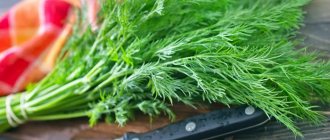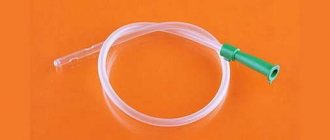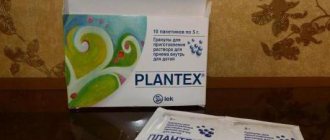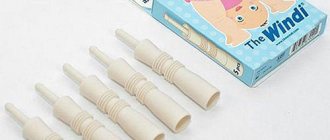"Chlorophyllipt" is one of the popular drugs used for sore throat, stomatitis, burns and other diseases. The reasons for the popularity of this medicine in childhood include a good therapeutic effect, a plant base and a small number of contraindications. The drug is often prescribed by pediatricians, ENT specialists, dermatologists, surgeons and other doctors, since the range of its use is very wide. But in order for the use of Chlorophyllipt to really be beneficial, parents should learn more about its effect on the child’s body, methods of use in children and the possible harm of such a medicine.
Release form and composition
The drug is produced in the following dosage forms.
- Alcohol based solution. This “Chlorophyllipt” has a concentration of 1% and as the main ingredient contains an extract from the leaves of a plant called eucalyptus globulus. The remainder of the solution is 96% ethyl alcohol. The medicine itself is transparent, green in color and is sold in glass bottles in volumes of 25 ml, 50 ml or 100 ml.
- Oil solution. It is thicker (with an oily texture) and more concentrated (contains 2% eucalyptus leaf extract), but is also transparent and dark green in color. This “Chlorophyllipt” is sold in glass bottles of 20 or 30 ml. Its only auxiliary component is vegetable oil, which is usually sunflower oil, but can also be corn oil.
- Pills. This solid version of "Chlorophyllipt" is distinguished by its green color, round shape and characteristic aroma. These tablets are designed to be dissolved. They are packaged in blisters of ten pieces and sold in 20, 30 or 50 tablets in one pack. Each tablet contains 25 mg of eucalyptus extract, supplemented with MCC, sugar, citric acid and calcium stearate.
- Spray. This “Chlorophyllipt” from some manufacturers is very convenient to spray on the surface of the skin or mucous membrane, since the bottle has a special device (the sprayer is put on before using the medicine). The volume of solution in one package is 15 or 45 ml. It contains an extract from eucalyptus, to which glycerin, polysorbate and other auxiliary ingredients are added.
Vialine spray also includes other plant extracts for a stronger anti-inflammatory effect on the mucous membrane. They are obtained from St. John's wort, wormwood, nettle and dubrovnik.
Chlorophyllipt solution for treating the navel of a newborn
Due to the immaturity of the immune system, newborns are especially susceptible to developing various diseases. Infections can enter the baby's body through an unhealed navel. To avoid infection, the umbilical wound requires special care. A herbal preparation for newborns, Chlorophyllipt is an effective and safe means for treating and disinfecting the umbilical wound.
The medicine is used for children in the treatment of prickly heat, runny nose, throat diseases and lesions of the oral mucosa. Before using Chlorophyllipt, you need to study its composition, release forms and methods of use.
Properties, composition and release forms of the drug
The drug is produced by several Russian and Ukrainian pharmaceutical companies: Er & Di Pharma, Vifitech, Health, Galichfarm. The drug has the following properties:
- bactericidal;
- antiviral;
- antifungal;
- antiprotozoal;
- anti-inflammatory.
The drug is available in several forms:
- oil and alcohol solution;
- spray;
- pills;
- concentrate for solution for intravenous administration.
For newborns, only the first 2 forms of the drug are approved for use. In some cases, if there are medical indications for infants, an intravenous method of administering the solution is used.
It is noteworthy that the Ukrainian-made oil solution is prohibited for use by persons under 18 years of age.
Perhaps this ban is due to the lack of clinical studies of the drug and the necessary documentation confirming its safety for children.
Despite this, Russian pediatricians do not share the opinion of their Ukrainian colleagues and safely prescribe Chlorophyllipt oil solution to infants. Information about each type allowed for newborns is presented in the table.
| Characteristic sign | Release form | ||
| Oil solution (2%) for topical use | Alcohol solution (1%) for oral and topical use | Concentrate for solution for injection (0.25%) | |
| Appearance | The liquid is bright green in color with the consistency of oil and a pronounced herbal odor. | A transparent liquid of a rich green hue with the smell of grass and alcohol. | Green transparent liquid. |
| Packing | 20 ml glass bottles with a screw-on plastic cap. Packed in thick cardboard boxes. | Glass bottles with volumes of 100 and 200 ml with a screw-on plastic or aluminum cap. The medicine is packaged in a cardboard box. | Glass ampoules with a volume of 2 ml. Contour cellular packaging of 5 ampoules. Each box of the drug contains 2 individual packages, or 10 ampoules. The medicine is packaged in a thick cardboard box. |
| Compound | Eucalyptus leaf extract, vegetable oil (sunflower, corn or olive). | Eucalyptus leaf extract, ethyl alcohol 96%. |
Indications for use in newborns
Indications for the use of Chlorophyllipt in newborns:
- ENT diseases (runny nose, pharyngitis) - for an oil solution;
- staphylococcus, prickly heat, diaper dermatitis, violations of the integrity of the skin and mucous membranes, itchy rashes due to chickenpox, treatment of the umbilical wound - for an alcohol solution of 1%;
- inflammatory process, intrauterine infections - for injection concentrate.
Instructions for use of Chlorophyllipt for newborns
Each package of medicine has instructions containing a detailed description of how to use one or another form of the drug. Before using Chlorophyllipt, it is recommended to consult a doctor. It is prohibited to use an alcohol solution for intravenous administration at home. This form of the drug is used only in a hospital.
For treating the umbilical wound
The umbilical wound is allowed to be treated only with a 1% alcohol solution. The navel treatment procedure includes the following steps:
- after bathing, the baby is laid on his back, the navel is blotted with a clean napkin;
- you need to drop hydrogen peroxide onto the wound and after 2-3 minutes carefully remove the softened crusts with a cotton swab;
- lubricate the navel with a piece of sterile cotton wool moistened with Chlorophyllipt;
- After the medicine has dried, you can dress the baby.
Treatment of heat rash
To treat prickly heat in newborns, it is recommended to use a weak 1% alcohol solution. It can be diluted with boiled water or saline in a 1:1 ratio.
A cotton pad soaked in a diluted medicine should be used to wipe the affected areas of the baby’s body 2-3 times a day. At the same time, it is forbidden to treat the skin near the nose and mouth, since if the baby accidentally inhales alcohol vapors, the baby may become seriously poisoned.
In most cases, the baby’s skin condition improves after the first use of Chlorophyllipt.
Getting rid of a runny nose
To eliminate the symptoms of a runny nose in newborns, an oil solution is used. It effectively cleanses the nasal passages, promotes the removal of mucus and relieves the inflammatory process.
Before using the medicine, it is recommended to clean the baby’s nose. To do this, a few drops of chamomile decoction are instilled into each nostril in turn.
After 1-2 minutes, use an aspirator, pipette or small rubber syringe to remove the mucus accumulated in the nose.
After cleaning the nose, the baby should insert a cotton swab soaked in an oil solution into the left nostril for 2-3 minutes. The same must be repeated with the right nostril. This procedure can be carried out no more than 5 times a day.
For diseases of the throat and oral cavity
Diseases of the mouth and throat in infants are treated with an oil solution. You can use it in 2 ways:
Source: https://kolyaski-indigo.ru/bolezni/mozhno-li-hlorofillipt-novorozhdennym.html
At what age is it allowed?
The use of liquid forms of "Chlorophyllipt" for external treatment is possible at any age. At the same time, using an oil or alcohol solution to treat mucous membranes or internally at an early age is permissible only as prescribed by a doctor. The instructions for the tablets list contraindications for people under 18 years of age, but in practice this type of “Chlorophyllipt” is sometimes prescribed for schoolchildren and teenagers.
The annotation for the sprays also notes that young patients have no experience in using this form, so irrigating the throat in children is possible only after examination by a doctor. In fact, Chlorophyllipt spray is often prescribed to patients aged 2-6 years, since at this age it is difficult for children to gargle, and treating the tonsils and arches with the spray is very convenient.
Chlorophyllipt for newborns to treat the navel, get rid of prickly heat and other symptoms
Due to the immaturity of the immune system, newborns are especially susceptible to developing various diseases. Infections can enter the baby's body through an unhealed navel. To avoid infection, the umbilical wound requires special care. A herbal preparation for newborns, Chlorophyllipt is an effective and safe means for treating and disinfecting the umbilical wound.
The medicine is used for children in the treatment of prickly heat, runny nose, throat diseases and lesions of the oral mucosa. Before using Chlorophyllipt, you need to study its composition, release forms and methods of use.
In what cases is the drug administered intravenously to newborns?
A 0.25% alcohol solution of Chlorophyllipt is used for intravenous administration in newborns only in extreme cases in the presence of such serious diseases as blood poisoning and pneumonia.
Injections are performed only in a hospital setting. The drug is pre-diluted with saline solution. The procedure is usually carried out 2 times a day.
In this case, oral use of the medicine diluted with water or breast milk is additionally prescribed.
Contraindications and possible adverse reactions in infants
Contraindications to the use of Chlorophyllipt:
- hypersensitivity to the components of the drug;
- atrophy of the mucous membranes of the upper respiratory tract.
Before using the medicine, you must make sure that the baby does not have these phenomena. Otherwise, you can seriously harm his sensitive body. Possible side effects of Chlorophyllipt include:
- allergic reactions;
- attacks of nausea and vomiting;
- diarrhea;
- muscle spasms.
The last 3 symptoms may occur as a result of oral use of large doses of the drug. If at least one of these phenomena occurs, you should immediately stop taking the medication. Regardless of whether these signs disappear or not after stopping the drug, the baby must be shown to a doctor.
Source: https://RosMedPlus.ru/aptechka/preparaty/hlorofillipt-dlya-novorozhdennyh-pupka.html
Indications
The reasons for using Chlorophyllipt in childhood are:
- treatment of the umbilical wound in a newborn baby;
- local treatment of prickly heat, abrasions, scratches, insect bites, burns and other minor skin injuries;
- treatment of runny nose and cough due to colds, adenoids and ARVI;
- treatment of wounds for stomatitis or inflammation of the gums;
- treatment of the throat for pharyngitis, sore throat or laryngitis;
- detection of staphylococci in the intestines.
Pharmaceutical forms of chlorophyllipt and their use for a runny nose
Chlorophyllipt has a rich green color with a pleasant eucalyptus aroma.
Available in the form of tablets and solutions (alcohol and oil). To treat infections of various locations, the doctor selects the necessary form of the drug, which will be effective in each individual case.
Alcohol (1%) and oil (2%) solutions of chlorophyllipt are used in the following cases:
- skin infections;
- douching for cervical diseases;
- enemas;
- nasal drops;
- gargling for tonsillitis and pharyngitis;
- intracavitary lavages (for example, maxillary sinuses);
- treatment of the digestive system.
Spray (0.2%) is an excellent means for irrigating the throat. Also, tablets based on chlorophyllipt are used to eliminate inflammation in the throat. The drug is also available in ampoules for intravenous administration in septic conditions.
Side effects
Since the medicine contains an extract from the plant, Chlorophyllipt can provoke skin redness, rash, swelling and other allergy symptoms. To prevent such a negative reaction to the drug, you should start using Chlorophyllipt in childhood with a sensitivity test. It consists of lubricating a small area of skin with the solution or ingesting a few drops of Chlorophyllipt in oil. After a few hours, it is assessed whether an allergy has manifested itself. If there is no local or general reaction, you can then use the product as prescribed by your doctor.
Chlorophyllipt for the common cold - how to use, reviews, side effects
Chlorophyllipt has long been popular among the population. It is widely used for various diseases, is used in pediatric practice and is not contraindicated in pregnant women.
For ENT infections, chlorophyllipt is preferred more often than for other pathologies. It successfully treats the nasopharynx, and in particular: tonsillitis, pharyngitis and rhinitis. Chlorophyllipt is classified as a product with pronounced antibacterial activity. In some cases, it eliminates bacteria that the antibiotic did not neutralize.
Currently, such cases are not uncommon; bacteria have “learned” to adapt to antibacterial agents and exhibit pronounced resistance. In such conditions, chlorophyllipt will be useful.
Instructions for use
The umbilical wound is treated with Chlorophyllipt 2 times a day - the product is applied during hygiene procedures in the morning and after bathing in the evening. First, hydrogen peroxide is dripped onto the navel (this helps eliminate crusts), and then lubricated with an alcohol solution of “Chlorophyllipt” using a cotton swab.
If the reason for using Chlorophyllipt is damage or inflammation of the skin, the product is also used topically. To do this, you can use a medicine containing alcohol, diluting it with saline or water. After moistening a cotton pad with diluted Chlorophyllipt, wipe the affected skin 2-4 times a day. When using a spray, a little solution is sprayed onto a gauze swab, and then applied to the affected area for 15-20 minutes twice a day.
If “Chlorophyllipt” is prescribed for a sore throat or other throat disease, then the drug can be used in different ways depending on its form.
- An alcohol solution is often used for rinsing. The procedure is performed three or four times a day. Usually they take a teaspoon of Chlorophyllipt and a glass of water, but sometimes the proportions are different. It is important to remember that you should gargle after eating.
- An oil solution is used to lubricate inflamed areas. Manipulation is carried out using a cotton swab dipped in a solution. If it is difficult for a child to withstand such treatment, you can drop a little “Chlorophyllipt” in oil into the mouth, because this way the product will also get onto the lining of the throat. The frequency of this solution is 2 times a day, and after use, you should not drink or eat anything for at least 30 minutes.
- "Chlorophyllipt" tablets can be dissolved. This should be done slowly, and biting or chewing the drug is not recommended. This solid form of the medicine is used every 4-5 hours or at another interval, which is specified by the doctor.
- The spray is sprayed onto the throat tissue. To do this, point the nozzle at the inflamed area and press the valve twice. Irrigation is performed 1-4 times a day, and after it you should not eat or drink for at least 20 minutes.
- Sometimes the doctor prescribes inhalations. To carry out such procedures, only 1 ml of alcohol solution should be taken in the nebulizer. 10 ml of saline solution is added to it and 3 ml of the diluted drug is taken for one inhalation. You need to breathe “Chlorophyllipt” for 5-10 minutes, and the number of procedures is determined by the doctor, but they are often done 2 or 3 times during the day.
Self-medication: Treatment of a newborn’s navel with Chlorophyllipt
Treatment of the umbilical wound with a cotton swab and antiseptic
An umbilical wound after birth requires a responsible attitude from parents. Sometimes it is not given enough attention, which is why infections, inflammation and even umbilical fistulas develop.
An umbilical fistula can lead to intestinal loops moving out of the desired position, which can negatively affect the baby’s health.
In the umbilical wound, if left untreated, bacteria constantly accumulate and affect the entire body. Also, a wound without treatment takes a very long time to heal, which can lead to an increased risk of infection. The most dangerous bacteria are staphylococci, which children often become infected with in clinics.
Particular attention should be paid to babies who constantly toss and turn or are restless. They can damage the crust, which can lead to infection.
Why you should not treat with brilliant green and potassium permanganate
Potassium permanganate crystals can burn the delicate skin of a child
Potassium permanganate contains substances that can burn the skin of a newborn. Preparing a well-dissolved mixture is a complex process, and proper dissolution of the crystals can be missed. It is also necessary to prepare a fresh portion each time, since the wound cannot be treated with an old solution.
Even a small crystal, which is difficult to notice with a glance, in a solution can lead to a strong burning sensation. Behind the colored skin, it is difficult to assess the condition of the wound and the presence of unpleasant discharge. Therefore, the use of potassium permanganate solution fades into the background.
Zelenka is a more effective and reliable drug, but it also has disadvantages. Previously, only this medicine was used by doctors, as well as parents at home. However, its main drawback is its strong staining. The green tint is very difficult to remove from furniture, clothing and other items. It darkens the wound so much that it is impossible to understand the process of its healing.
Against the background of all these drugs, Chlorophyllipt wins in almost all respects. And, most importantly, it has virtually no disadvantages or contraindications.
Why does the navel need to be treated?
It is this place on the newborn’s body that requires special care. The navel is a wound in which pathogenic bacteria can accumulate. Through unhealed tissue, infection can easily enter the newborn’s body.
Staphylococcus is considered the most dangerous infection for a child; you can become infected with it in the maternity hospital, in the clinic, and at home.
It is difficult to combat such a problem, because almost all medications kill not only staphylococcus, but also beneficial bacteria.
The healing of the navel is especially bad in a restless baby, who often screams and tosses and turns a lot. To avoid infection, you need to treat your baby's navel twice a day (morning and evening). It is also necessary to monitor the condition of the umbilical wound: it should be dry, diapers or nappies should not rub this area. For newborns there are special diapers with a cutout for the navel.
If a newborn’s navel bleeds, what to do, what measures to take?
You can treat the navel using potassium permanganate. But dissolving potassium permanganate is very inconvenient. Even a small crystal of the substance can cause a burn to delicate skin, so it must be thoroughly dissolved in a large amount of water and filtered through gauze folded in several layers. For each treatment, a fresh portion of the solution must be prepared.
What is chlorophyllipt
Chlorophyllipt is most preferable for treating the umbilical wound
The medicine consists of eucalyptus extract, which is capable of destroying pathogenic microflora almost completely. Among the properties of natural ingredients:
- protection against burns of sensitive skin;
- complete destruction of infections, eucalyptus extracts are especially effective in the fight against staphylococcus;
- does not cause a burning sensation, so the baby can easily tolerate wound treatment;
- does not stain – the composition does not contain pigment substances that can permanently stain the skin around the navel;
- prevents the destruction of beneficial microflora living on the skin.
Chlorophyllipt does not have an aggressive effect; it only rarely causes adverse reactions.
Natural ingredients are effective in preventing infections and disinfect wounds well. However, in the presence of acute inflammation or a purulent process, antibiotics and potent drugs can no longer be avoided.
Side effects
Eucalyptus extract, which is found in all forms of Chlorophyllipt, has antimicrobial and antiseptic effects.
It contains many minerals, chlorophylls, phytoncides, essential oils and other compounds that help destroy harmful microorganisms. This extract is especially effective against staphylococci.
It is able to influence even strains of bacteria that are not killed by the most common antibiotics.
Source: https://HappyParent.ru/zdorove/hlorofillipt-dlya-obrabotki-pupka-novorozhdennyh-otzyvy.html
Terms of sale
All forms of Chlorophyllipt are sold in pharmacies as over-the-counter products, and their cost depends on the volume of the drug and its type. For example, a bottle of an alcohol solution containing 100 ml of medicine costs 300 rubles, the price of a Vialine spray or 20 ml of an oil solution costs about 200 rubles, and the cost of 20 tablets is approximately 100 rubles.
What properties does chlorophyllipt have?
A big plus is that the product has a plant base. Essential oils, chlorophylls (A and B) and other beneficial water-based components are extracted from eucalyptus leaves. Chlorophyllipt exhibits the following medicinal properties:
- anti-inflammatory,
- regenerating;
- bactericidal;
- immunostimulating;
- antiprotozoal (eliminates protozoa, for example, Trichomonas);
- fungicidal (antifungal);
- sedative;
- improves digestion.
The higher the concentration of the drug, the stronger the active composition.
With internal and inhalation use of chlorophyllipt, a bronchodilator effect is observed (bronchial obstruction is eliminated), and a pronounced mucolytic (sputum thinning) and expectorant effect is also manifested.
During external use, the drug has antipruritic, antiexudative, anesthetic and astringent effects.
Chlorophyllipt has a pronounced inhibitory effect against Staphylococcus aureus, epidermal and saprophytic Staphylococcus. The drug is especially useful for all multi-resistant strains of staphylococcus.
Storage conditions
At home, Chlorophyllipt is stored at room temperature. In this case, the packaging of the medicine should be kept in a place hidden from children. The shelf life of the medicine is usually 2 years (sometimes 3 years) and is marked on the packaging. It needs to be checked before starting treatment so as not to accidentally use an expired drug.
The use of Chlorophyllipt in the treatment of infants
Children encounter pathogenic bacteria every day, but in the first year of life their immunity is not yet strong enough to cope with the attack of microbes.
And therefore, infants can experience various infections. To eliminate them, it is often impossible to do without the use of antibiotics, but in some cases you can limit yourself to antiseptic agents, among which Chlorophyllipt is very popular. This herbal medicine can influence bacteria, but does not harm the baby’s body, so it can be used from birth. Let us consider its properties and reasons for use in infants in more detail.
Which composition to choose for diaper rash: alcohol or oil?
Regardless of the dosage form in which Chlorophyllipt is presented, its use contributes to the effective elimination of pathogenic microorganisms.
As for the alcohol solution, its use is advisable for prickly heat, for treating the umbilical wound, and also for gargling.
An oil solution is used in cases where alcohol-containing products are contraindicated. Chlorophyllipt oil differs from alcohol in that when applied to a damaged area, it has a healing effect for a longer time.
Which form is best to use for skin irritations caused by excessive sweating? Here you need to be guided only by individual characteristics. Regardless of the form in which Chlorophyllipt is used - an oil solution or an alcohol solution, the mechanism of action of the drug consists of the following properties:
- suppression of the process of growth and reproduction of cells of pathogenic microbes. The product perfectly and almost instantly destroys bacteria accumulated on the skin, eliminates irritation, relieves redness, itching and dryness, which quite often accompany diaper rash and prickly heat;
- reduction of symptoms of a disturbing disease. Chlorophyllipt for diaper rash is ideal for daily use. It softens and soothes irritated skin, reduces the risk of rashes spreading, and prevents the formation of purulent masses in the affected areas;
- elimination of redness, suppuration and inflammatory processes caused by pathogenic streptococci on the mucous membranes;
- relieving swelling and accelerating the healing of skin damaged by ulcers, rashes and other pathologies.
For those who want to eliminate skin irritations caused by hyperhidrosis in the form of prickly heat and diaper rash, alleviate the symptoms of pathologies and speed up recovery, Chlorophyllipt solution is ideal; the instructions for use allow it to be applied to any type of skin, including overly dry and sensitive skin.
Contraindications and side effects
The drug is used with caution in allergy sufferers, and individual intolerance to the drug is also possible.
In some cases (rarely), more often when using the drug orally, the following symptoms may occur
With intensive lubrication or irrigation of the throat and nose, dryness of the mucous membranes, as well as their atrophy, is possible. Swelling and severe hyperemia of the mucous membranes may develop (with allergic reactions).
When used externally, a rash or manifestations of dermatitis sometimes appear on the skin. The development of side effects when using chlorophyllipt is extremely rare.
Chlorophyllipt should not come into contact with the eyes. If the solution accidentally gets on the conjunctiva, immediately rinse your eyes under running water.
To avoid allergic reactions, carry out small tests. For internal use, it is recommended to drink 25 drops of an alcohol solution (1%) dissolved in 10 ml of water. If there are no complaints within 7 hours, chlorophyllipt is allowed to be used orally.
For external use, it is enough to lubricate a small area of the skin or mucous membranes with an oily solution, and evaluate the application area for 30 minutes. In the absence of complaints, the drug is indicated for treatment.
Oil drops for runny nose
What is the best way to use chlorophyllipt for a runny nose and nasopharyngeal diseases?
Usually, for a runny nose and throat diseases, rinsing, irrigation, instillation and inhalation with a solution of chlorophyllipt are used. It’s rare that a runny nose “goes away” on its own or a sore throat without any complaints from the nose. The presence of snot without complaints of sore throat usually occurs with vasomotor and allergic rhinitis. But, for these forms of runny nose, chlorophyllipt is not used.
Viral and bacterial forms of the common cold usually occur when the entire nasopharynx is affected due to the rapid spread of viruses and bacteria. Here chlorophyllipt will be simply necessary and will show decent results. Therefore, treatment with the drug consists of complete sanitation of the nasopharynx, and not of its individual sections.
It is recommended to use chlorophyllipt for a child for a runny nose only with the permission of an experienced doctor. The same applies to the use of chlorophyllipt during pregnancy.
One of the best analogues of Chlorophyllipt is Miramistin, it is great for children and pregnant women.










